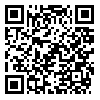1. Andreou E, Vlachos F, Stavroussi P. Multiple inelegances of typical readers and dyslexic adolescences. Int J Educ Learn Dev. 2013;1(2):61-72. [
DOI:10.1080/23796529.2013.11674707]
2. Gartland D, Strosnider R. Learning disabilities and young children: Identification and intervention. Learn Disabil Q. 2007;30(1):63-72. [
DOI:10.2307/30035516]
3. Seif Naraghi M, Naderi E. Learning disorders, history, definition, classification, diagnosis, procedures, methods of teaching and clinical samples. Tehran: Amir Kabir Pub; 2014, PP: 47-59. [Persian]
4. Sharifi AA, Zare H, Heydari M. Comparison of active memory between dyslexic students and normal students. Journal Learning Disabilities Research. 2014; 2 (3): 6-17. [Persian]
5. Mayes SD, Calhoun SL. Frequency of reading, math, and writing disabilities in children with clinical disorders. Learn Individ Differ. 2006;16(2):145-157. [
DOI:10.1016/j.lindif.2005.07.004]
6. Ridley DS, Schutz PA, Glanz RS, Weinstein CE. Self-regulated learning: The interactive influence of metacognitive awareness and goal-setting. J Exp Educ. 1992;60(4):293-306. [
DOI:10.1080/00220973.1992.9943867]
7. Dunn N, Shields N, Taylor NF, Dodd KJ. Comparing the self-concept of children with cerebral palsy to the perceptions of their parents. Disabil Rehabil. 2009;31(5):387-393. [
DOI:10.1080/13682820802052125]
8. Navidi A. The Significant Study of Common and Special of Former Academic Function Variables Academic Self-concept and General Intelligence in Academic Achievement Prediction of Students. The Quarterly Journal of Education.2003; 76: 97-129. [Persian]
9. Koura AA, Al-Hebaishi SM. The relationship between multiple intelligences, self-efficacy and academic achievement of Saudi gifted and regular intermediate students. Educ Res Int. 2014;3(1):48-70.
10. Hearne D, Stone S. Multiple intelligences and underachievement: Lessons from individuals with learning disabilities. J Learn Disabil. 1995;28(7):439-448. [
DOI:10.1177/002221949502800707]
11. İkiz FE, Çakar FS. The Relationship between Multiple Intelligences and academic achievements of second grade students. Mehmet Akif Ersoy Üniversitesi Sos Bilim Enstitüsü Derg. 2010;(3):83-92.
12. Al-Sabbah S, Al-Sabbah S, Farhanah A. The Implications of Multiple Intelligence Theory and MIDAS Scale for Educators and Students in Jordanian Schools. Int J Innov Manag Technol. 2011;2(2):136-40.
13. Gaines D, Lehmann D. Improving Student Performance in Reading Comprehension through the Use of Multiple Intelligences. [MA Thesis]. Saint Xavier University; 2002.
14. Delavare A. Research Methods in Psychology and Educational Sciences. Tehran: Virayesh Pub; 2013. [Persian]
15. Hoge RD, Renzulli JS. Exploring the link between giftedness and self-concept. Rev Educ Res. 1993;63(4):449-465. [
DOI:10.3102/00346543063004449]
16. Chenari, M. The relationship between parenting attitudes and self-concept of children. [MA Thesis]. Tehran: Tarbiat Modarres University;1995. [Persian]
17. Abedi A. Construction and standardization Assessment Scale and estimate the multiple intelligences of children ages 12-6. Isfahan: Isfahan education organization; 2008. [Persian]
18. Bellflower JB. A case study on the perceived benefits of multiple intelligence instruction: Examining its impact on student learning [PhD]. [USA]: Fielding Graduate University; 2008.
19. Köksal MS, Yel M. The Effect of Multiple Intelligences Theory (MIT)-based Instruction on Attitudes towards the Course, Academic Success, and Permanence of Teaching on the Topic of" Respiratory Systems". Educ Sci Theory Pract. 2007;7(1):231-9.
20. Smagorinsky P. Multiple intelligences, multiple means of composing: An alternative way of thinking about learning. NASSP Bull. 1996;80(583):11-17. [
DOI:10.1177/019263659608058304]
21. Mussen KS. Comparison of the effect of multiple intelligence pedagogy and traditional pedagogy on grade 5 students' achievement and attitudes towards science. Walden University; 2007.
22. Sharghi Al-Laylehsar S. Effectiveness of Gardner's multiple intelligence based on reading performance of students with dyslexia symptoms in primary third grade student in Isfahan city. [MA Thesis in General Psychology]. [Tehran, Iran]: Faculty of Psychology and Educational Sciences, University of Isfahan: 2011; pp, 63-72. [Persian]
23. Abdi A, Norouzi D, Malaki H, Ibrahimi Ghavam S. Compare the effectiveness of teaching strategies based on multiple intelligences and learning common methods based on academic achievement and attitudes to science students in fifth grade. Journal of Educational Innovation. 2012; 37 (9): 101-120. [Persian]
24. Owolabi T, Okebukola F. Improving the Reading Ability of Science Students through Study Groups and Multiple Intelligences. Online Submiss. 2009;6(2):38-44.
25. Douglas O, Burton KS, Reese-Durham N. The effects of the multiple intelligence teaching strategy on the academic achievement of eighth grade math students. J Instr Psychol. 2008;35(2):182-188.
26. Cooper F. An examination of the impact of multiple intelligences and metacognition on the achievement of mathematics students. Capella University; 2008.
27. Johnson M. An Extended Literature Review: The Effect of Multiple Intelligences on Elementary Student Performance. University of California; 2007.





